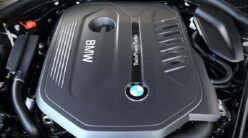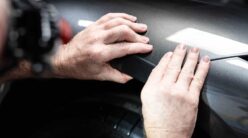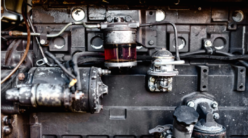Introduction to Honda Repair
When it comes to vehicle reliability and longevity, Honda has built a reputation that spans decades. However, even the most well-engineered cars require maintenance and occasional repair to keep them running smoothly. Whether you drive a Civic, Accord, CR-V, or any other model from the Honda lineup, understanding the ins and outs of Honda repair is essential for ensuring your vehicle’s optimal performance and longevity.
In this comprehensive guide, we’ll delve into various aspects of Honda repair, covering common maintenance tasks, troubleshooting tips, and repair procedures. From routine oil changes to more complex engine diagnostics, we’ll equip you with the knowledge needed to address common issues and keep your Honda in top condition.
Routine Maintenance for Honda Vehicles
Regular maintenance is crucial for preserving the performance, reliability, and resale value of your Honda. Here, we’ll explore some essential routine maintenance tasks that every Honda owner should be familiar with:
1. Oil Change
Regular oil changes are vital for lubricating the engine’s moving parts and preventing premature wear and tear. Follow your Honda’s recommended oil change intervals, typically every 5,000 to 7,500 miles, depending on driving conditions and the type of oil used.
2. Fluid Checks and Top-ups
Check and top up essential fluids such as coolant, brake fluid, power steering fluid, and transmission fluid regularly. Maintaining proper fluid levels helps ensure optimal performance and prevents damage to vital components.
3. Tire Rotation and Alignment
Rotate your tires regularly to promote even wear and extend their lifespan. Additionally, ensure proper wheel alignment to improve handling, fuel efficiency, and tire longevity.
4. Brake Inspection
Regularly inspect your Honda’s brakes for signs of wear, such as squealing or grinding noises, vibration, or reduced braking performance. Replace brake pads, rotors, and brake fluid as needed to maintain optimal stopping power.
5. Air Filter Replacement
Replace the engine air filter according to the manufacturer’s recommendations to ensure adequate airflow and optimal engine performance. A clogged air filter can reduce fuel efficiency and horsepower.
6. Battery Maintenance
Inspect the battery terminals for corrosion and ensure a secure connection. Clean the terminals if necessary and test the battery’s voltage regularly, especially before extreme weather conditions.
Common Honda Repair Issues
Despite Honda’s reputation for reliability, occasional mechanical issues may arise. Here are some common problems that Honda owners may encounter and how to address them:
1. Check Engine Light
The check engine light may illuminate due to various reasons, such as a loose gas cap, faulty oxygen sensor, or misfiring engine. Use a diagnostic scanner to retrieve trouble codes and diagnose the underlying issue accurately.
2. Transmission Problems
Some Honda models may experience transmission issues, such as slipping, rough shifting, or delayed engagement. Regular transmission fluid changes and proper maintenance can help prevent these problems. If transmission issues arise, consult a qualified mechanic for diagnosis and repair.
3. Electrical Issues
Electrical problems, such as malfunctioning power windows, door locks, or dashboard lights, may occur in Honda vehicles. Check fuses, relays, and wiring connections for any signs of damage or corrosion. If the issue persists, seek professional assistance to diagnose and repair electrical faults.
4. Suspension and Steering Components
Worn suspension and steering components can cause symptoms like excessive bouncing, noise over bumps, or difficulty steering. Inspect shocks, struts, ball joints, and tie rod ends for signs of wear and replace them as necessary to restore ride comfort and handling.
5. Engine Performance Problems
Poor engine performance, including rough idling, stalling, or reduced power, may indicate issues such as clogged fuel injectors, faulty ignition coils, or vacuum leaks. Perform a thorough inspection of the fuel, ignition, and emission systems to identify and rectify the problem.
DIY Honda Repair Tips
While some repairs may require professional expertise, many maintenance tasks and minor repairs can be performed by Honda owners with basic tools and mechanical knowledge. Here are some DIY repair tips for common issues:
1. Changing Engine Oil
To perform an oil change on your Honda:
- Gather the necessary tools and materials, including oil, oil filter, wrenches, and a drain pan.
- Jack up the vehicle and secure it with jack stands.
- Locate the oil drain plug and oil filter.
- Drain the old oil, replace the oil filter, and refill with the appropriate oil grade and quantity.
- Dispose of the used oil responsibly at a recycling center.
2. Replacing Brake Pads
To replace brake pads:
- Lift the vehicle and remove the wheels.
- Locate the brake caliper and remove the retaining bolts.
- Remove the old brake pads and compress the caliper piston if necessary.
- Install new brake pads and reassemble the caliper.
- Repeat the process for each wheel and test the brakes before driving.
3. Changing Air Filter
To replace the engine air filter:
- Open the hood and locate the air filter housing.
- Remove the housing cover and old air filter.
- Clean the air filter housing and install a new filter.
- Secure the housing cover and ensure a tight seal.
4. Checking and Topping up Fluids
To check and top up fluids:
- Locate the reservoirs for coolant, brake fluid, power steering fluid, and transmission fluid.
- Remove the caps and inspect the fluid levels.
- Add the appropriate fluid if necessary, ensuring not to overfill.
5. Inspecting Tires
To inspect tires for wear and tear:
- Check tire tread depth using a tread depth gauge.
- Look for signs of uneven wear, cuts, or bulges.
- Inflate tires to the recommended pressure and rotate them regularly for even wear.
When to Seek Professional Assistance
While DIY repairs can save money and provide a sense of accomplishment, certain repairs are best left to trained professionals. If you encounter any of the following scenarios, it’s advisable to seek professional assistance:
- Complex engine or transmission issues requiring specialized tools and diagnostic equipment.
- Electrical problems involving wiring diagrams or advanced troubleshooting techniques.
- Suspension or steering repairs requiring precise alignment and calibration.
- Safety-critical components such as brakes or airbags needing inspection or replacement.
Conclusion
Maintaining and repairing your Honda vehicle is essential for ensuring its longevity, reliability, and performance. By following routine maintenance schedules, addressing common issues promptly, and knowing when to seek professional help, you can keep your Honda running smoothly for years to come. Whether you’re performing DIY repairs in your garage or entrusting your vehicle to a qualified mechanic, prioritizing maintenance and timely repairs will help you get the most out of your Honda ownership experience.





